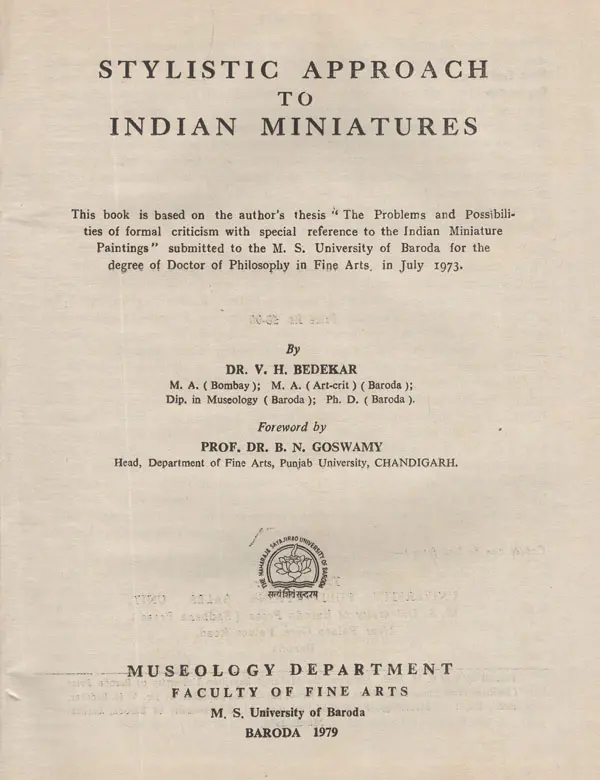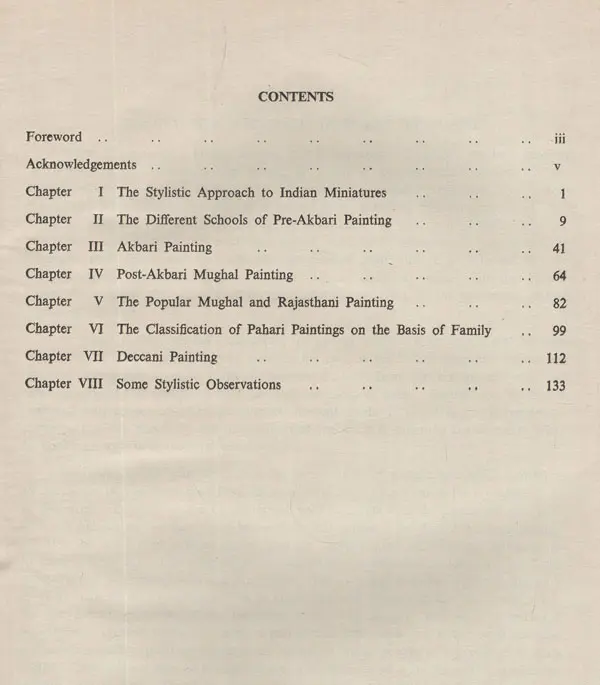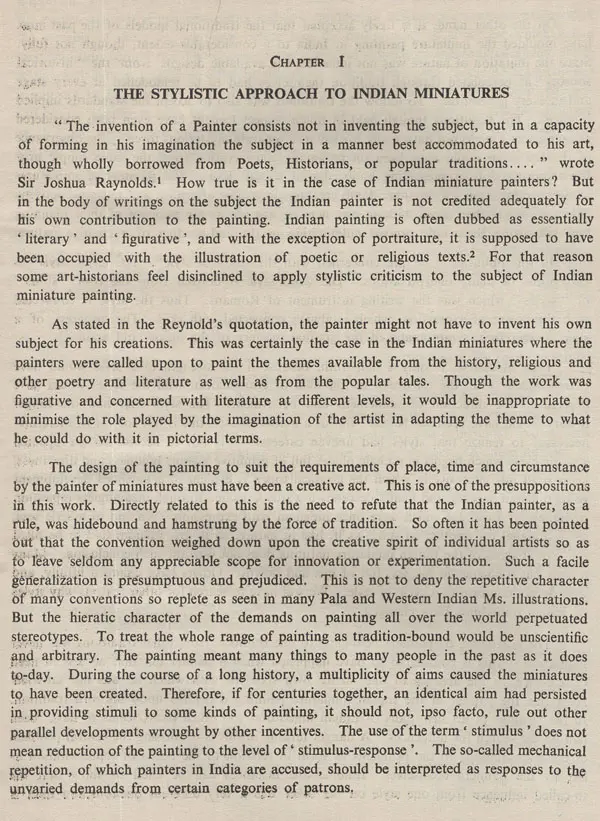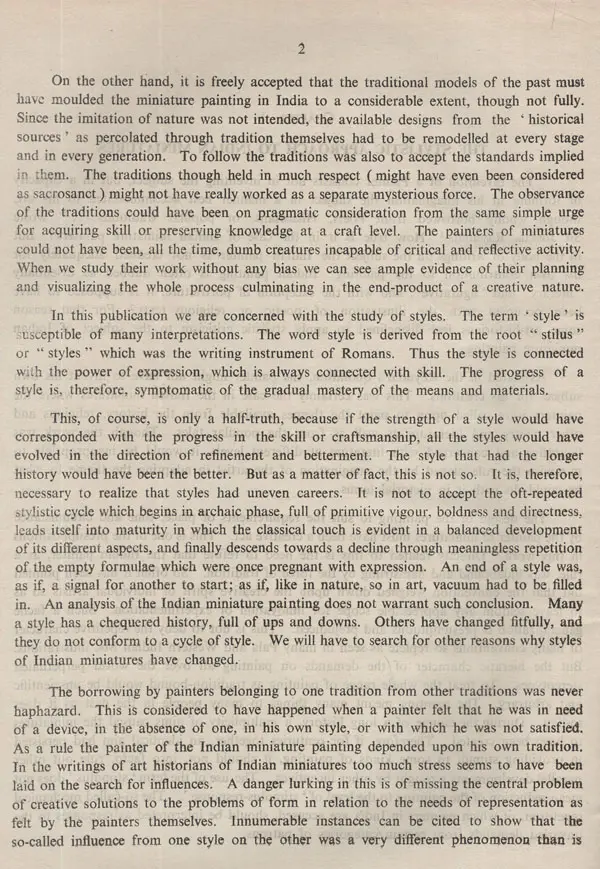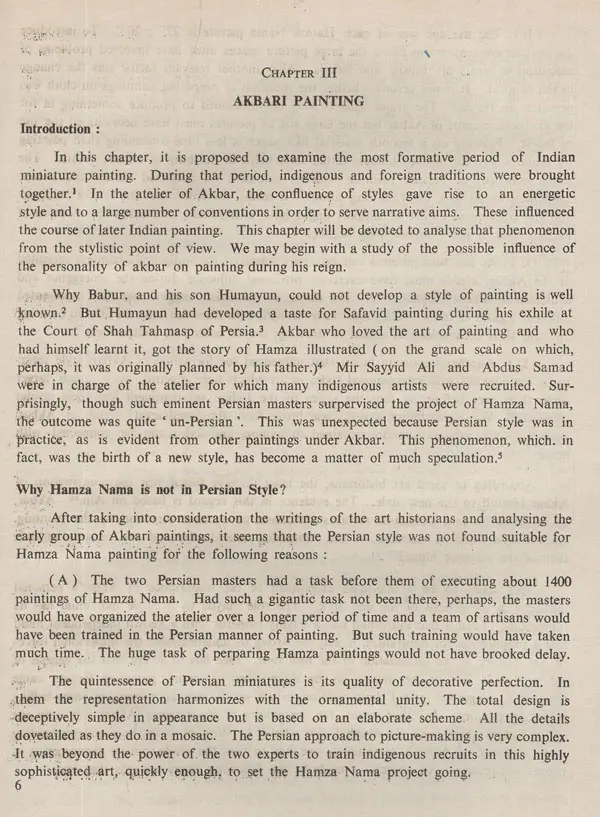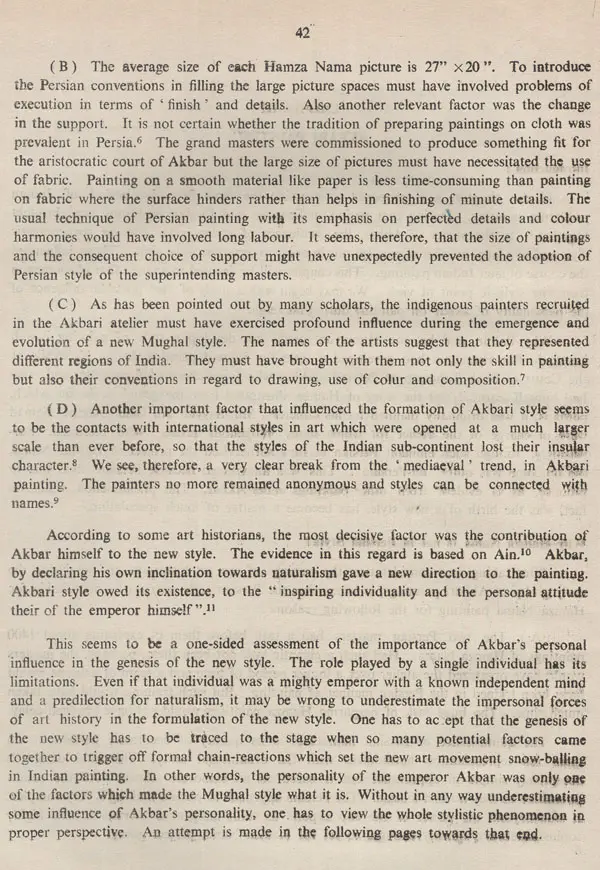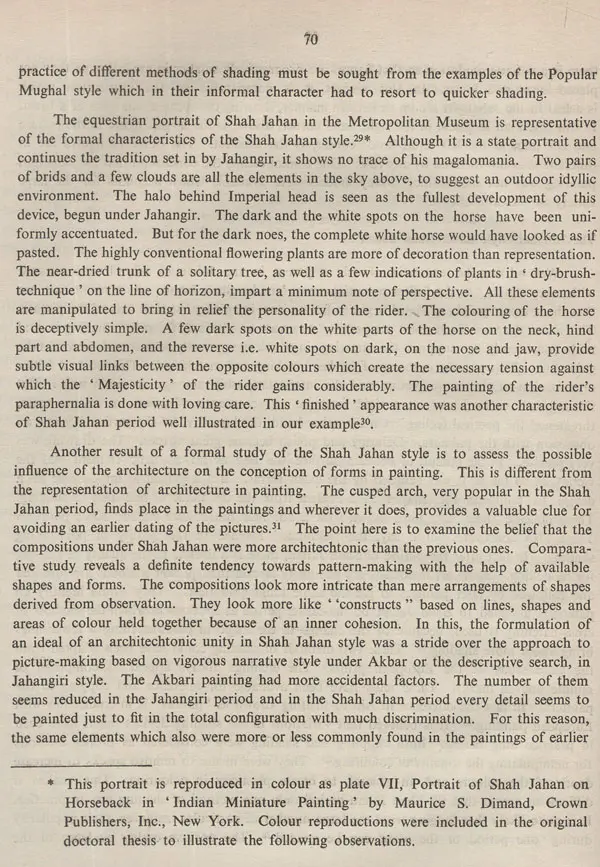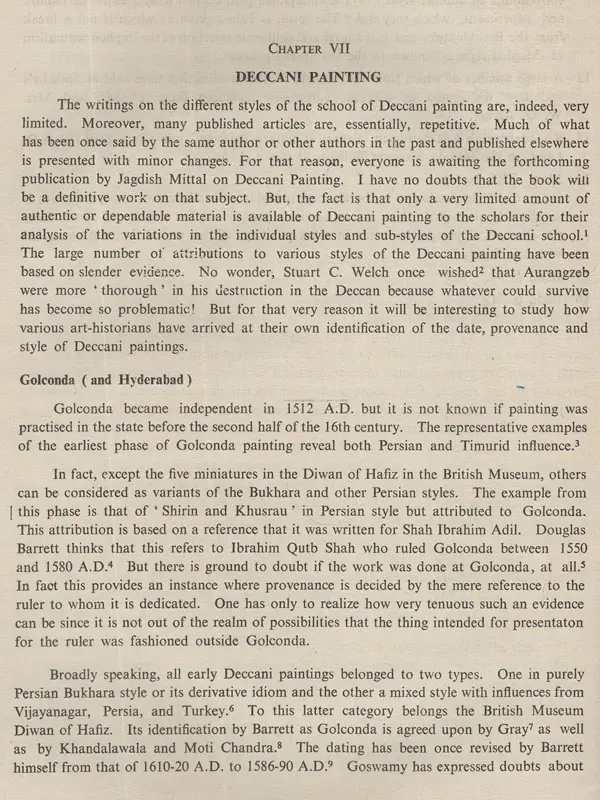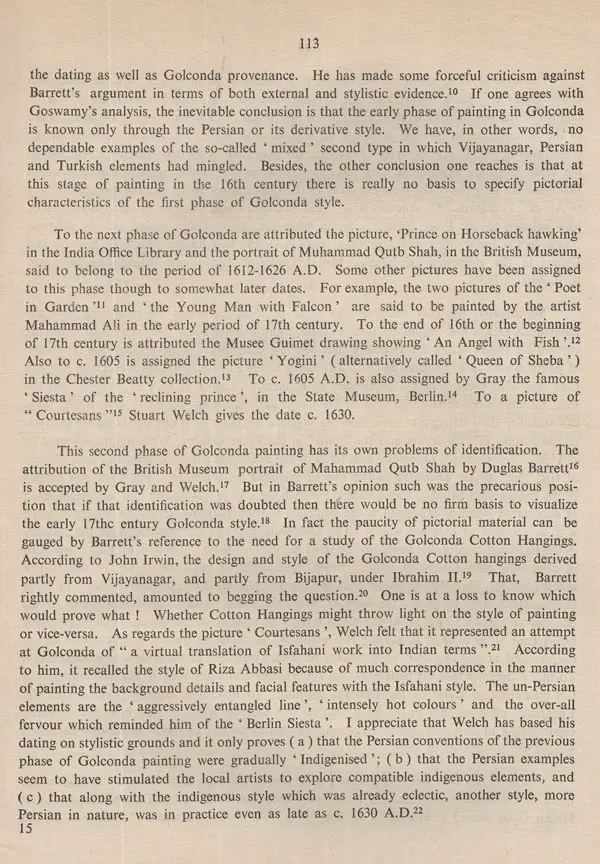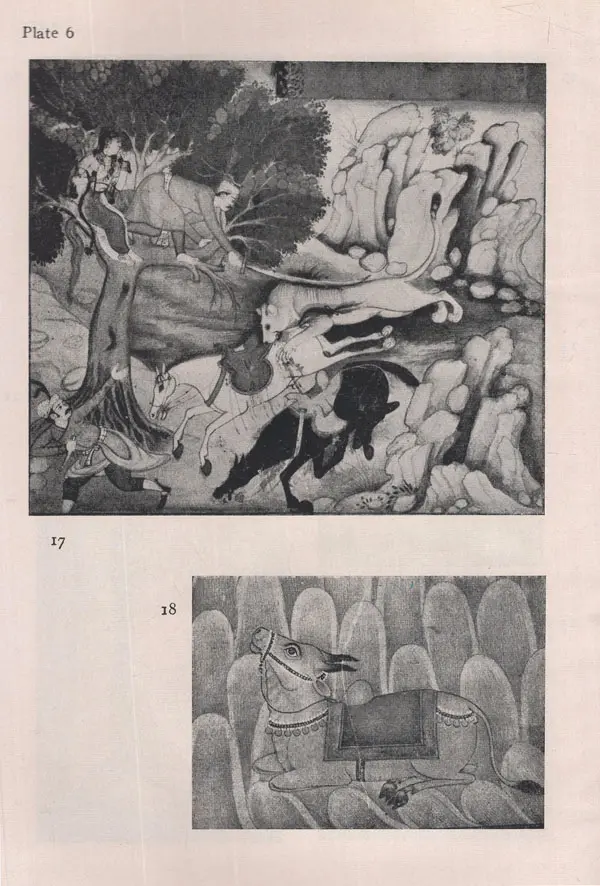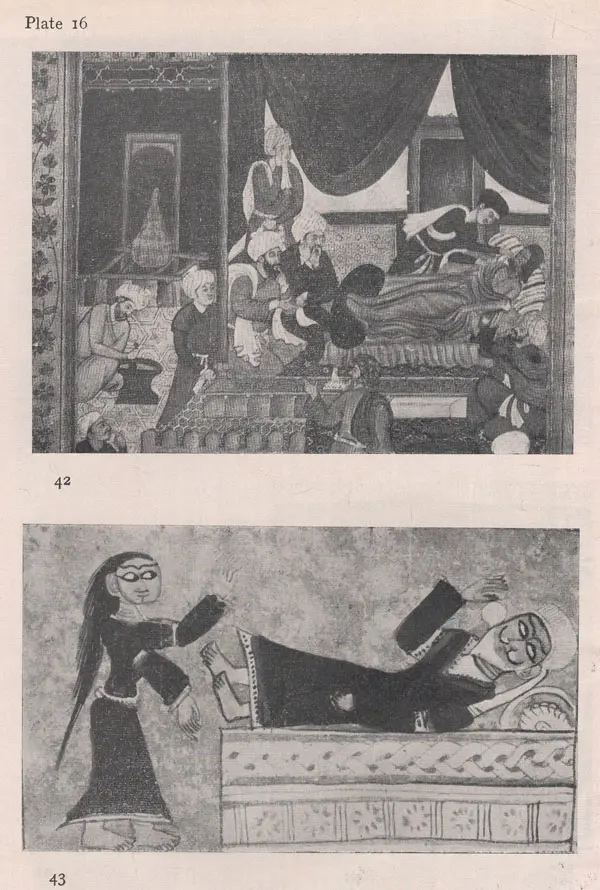
Stylistic Approach To Indian Miniatures (An Old and Rare Book)
Book Specification
| Item Code: | UAO920 |
| Author: | V. H. Bedekar |
| Publisher: | The Mahraja Siyajirao University of Barodra |
| Language: | English |
| Edition: | 1979 |
| Pages: | 165 (B/W Illustrations) |
| Cover: | HARDCOVER |
| Other Details | 10.00 X 7.50 inch |
| Weight | 420 gm |
Book Description
As one who has some contact with the subject, and has come in for his share of drubbing in these pages, I have known Professor Bedekar's admirable work for some years now. Also as one who shares the concern with which Professor Bedekar opens, that" the Indian painter is not adequately credited" for his contribution, as distinct from the myth-maker's and the poet's, to painting. I am in complete sympathy with the basic objective of the work. Too much of our art history has been archaeological in its approach; historical context and exegetical considerations have claimed an unduly large part of our attention. The study of style for what it is has, as a result, been a casualty. What is necessary, thus, is to develop a stylistic approach to Indian painting, to try and understand what truly constitutes style and the processes through which it undergoes modification, change, transformation, even metamorphosis. The painter must be brought back where he belongs, right into the picture. For, in the final analysis, all works of painting are his, the results of a creative intent and act.
Since virtually nothing has come down in the form of literature or memoirs on the subject, recording for us the journey of the creative mind through heritage, experimentation and change, nearly all questions must be addressed to the works themselves, all speculations made in their presence. I have myself, in my work, learnt much from working with the surviving painters, relics of a tradition, but this is neither always possible nor easy. Paintings one looks at of course, but, even more than these, I have found some answers in drawings. For, in their artless silence, one can sometimes hear the painter think. A striking example of the painter's awareness of the need for achieving a design that would suit "the requirements of place, time and circumstance", something that Professor Bedekar rightly emphasises, I found in the material I was working with for my study of the Nala Damayanti paintings from the collection of Dr. Karan Singh. Through a chance that must be considered exceptional in the context of Indian painting, here we have a complete set of preliminary drawings in sanguine, stretching over the entire portion of the Sanskrit text of Sriharsha's Naisadhacarita that was chosen to be illustrated, as also fully finished paintings of the first half of the series. The connection between the preliminary drawings and the finished paintings is all too clear to be seriously denied, and it is through comparison between these that revealing clues occasionally came my way.
**Contents and Sample Pages**
